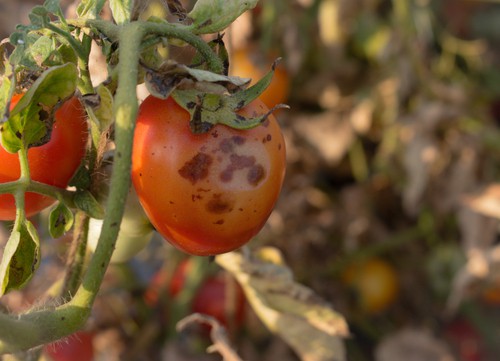Tomatoes are a staple in many gardens, but despite their popularity, they can be quite finicky plants. If you’re noticing that your tomato plant is starting to wilt or show other signs of distress, you may be wondering if it’s possible to revive it.
The good news is that with the right care and attention, it’s often possible to bring a dying tomato plant back to life.
To revive a dying tomato plant, it’s important to first recognize the symptoms of distress. These can include wilting leaves, yellowing foliage, and stunted growth. Once you’ve identified the problem, you can start to address the underlying causes, which may include issues like over- or under-watering, poor soil quality, or pest infestations.
By taking steps to address these issues and provide your plant with the care it needs, you can often help it recover and produce a healthy crop of tomatoes.
Key Takeaways
- Recognize the symptoms of a dying tomato plant, such as wilting leaves and yellowing foliage.
- Understand the causes of distress, such as poor soil quality or pest infestations.
- Take steps to revive your tomato plant, such as adjusting watering habits and providing proper care.
Check out these other top posts:
- How to Revive a Dying Strawberry Plant
- How to Revive a Dying Spider Plant
- How to Revive a Dying Rose Plant
Recognizing the Symptoms
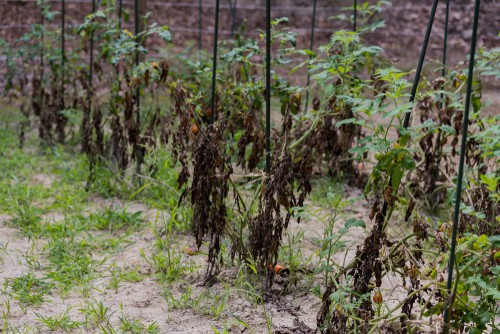
If you’re noticing that your tomato plant is not looking as healthy as it should be, it may be dying. Here are some symptoms to look out for:
1. Leaf Discoloration
One of the most common signs of a dying tomato plant is leaf discoloration. The leaves may start to turn yellow, brown, or even black. This can be caused by a lack of nutrients in the soil, or by overwatering or underwatering the plant.
2. Wilting
Another symptom of a dying tomato plant is wilting. The leaves and stems may start to droop and look limp. This can be caused by a lack of water, or by a disease such as bacterial wilt.
3. Diseased Foliage
If you notice that the foliage on your tomato plant is diseased, it may be dying. Look for signs of blight, which can cause the leaves to turn brown and crispy. This can be caused by a fungal infection, and can quickly spread to other plants.
4. Underdeveloped Fruit
If your tomato plant is not producing fruit or the fruit is small and underdeveloped, it may be dying. This can be caused by a lack of nutrients in the soil, or by a lack of sunlight.
It’s important to recognize these symptoms early so that you can take action to revive your dying tomato plant. Adding fertilizer to the soil, adjusting watering habits, and pruning diseased foliage can all help to save your plant.
Understanding the Causes
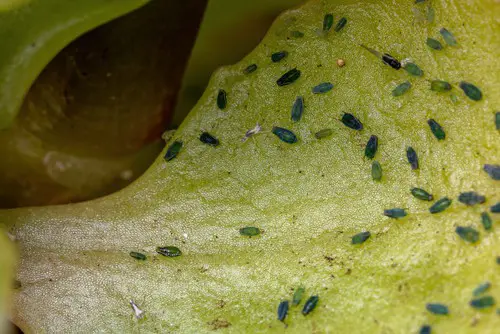
When a tomato plant starts to wilt and show signs of dying, it’s important to understand the underlying causes to effectively revive it. There are several factors that contribute to the decline of a tomato plant, including disease, pests, and environmental factors.
1. Disease
Tomato plants are susceptible to various diseases that can cause them to wilt and die. One common disease is blight, which is caused by a fungus that thrives in warm, humid weather.
Blight can cause the leaves of the tomato plant to turn yellow and wilt, and can also affect the fruit. Another disease is verticillium wilt, which is caused by a soil-borne fungus that attacks the roots of the tomato plant. This disease can cause the leaves to turn yellow and wilt, and can also cause the fruit to be small and underdeveloped.
2. Pests
Tomato plants can also be attacked by various pests, including aphids, spider mites, and whiteflies. These pests can suck the sap from the tomato plant, causing it to wilt and die. Another pest that can attack tomato plants is the tomato hornworm, which can devour the leaves and fruit of the plant.
3. Environmental Factors
Environmental factors can also contribute to the decline of a tomato plant. One common factor is temperature, as tomato plants thrive in warm weather but can struggle in extreme heat or cold.
Another factor is sunlight, as tomato plants need at least five hours of direct sunlight per day to grow and produce fruit. Water is also important, as both drought and overwatering can cause tomato plants to wilt and die.
Humidity and rain can also contribute to the growth of disease and pests, while wet weather can cause the fruit to crack and rot.
By understanding the potential causes of a dying tomato plant, gardeners can take steps to revive it and prevent future problems.
Prevention and Care

Tomato plants are relatively easy to grow but require proper care to avoid dying. Prevention is always better than cure, and the same applies to tomato plants. Here are some tips to prevent your tomato plant from dying:
1. Proper Watering
Watering is one of the most critical factors in growing healthy tomato plants. Overwatering or underwatering can cause stress to the plant, leading to wilting, yellowing leaves, and even death. The key is to water your tomato plant consistently and in moderation.
Tomato plants need about 1-2 inches of water each time and shouldn’t be watered again until the topsoil is only slightly moist. Consistently over or under-watering your tomato plant will cause it to start to die, and your watering schedule should be adjusted immediately if you believe this is the cause of your plant’s distress.
2. Appropriate Sunlight
Tomatoes need plenty of sunlight to grow and produce fruit. They need at least 5 hours of direct sunlight every day to thrive. If your tomato plant is not getting enough sunlight, it will become weak, stunted, and more prone to pest and disease problems.
Make sure to plant your tomato plant in a spot that receives full sun. If you’re growing tomatoes indoors, you can use grow lights to provide the necessary light.
3. Fertilizing
Tomatoes are heavy feeders and require regular fertilization to grow healthy and produce fruit. Use a balanced fertilizer that contains equal amounts of nitrogen, phosphorus, and potassium.
Apply the fertilizer every two weeks during the growing season, following the instructions on the package. Over-fertilizing can burn the roots and cause the plant to die, so make sure to follow the recommended dosage.
4. Pruning
Pruning is an essential part of growing healthy tomato plants. It helps to improve air circulation, reduce the risk of disease, and increase fruit production.
Remove the suckers that grow between the main stem and the branches. Also, remove any yellow or diseased leaves as soon as you notice them. This will help to prevent the spread of disease and keep the plant healthy.
Reviving Your Tomato Plant
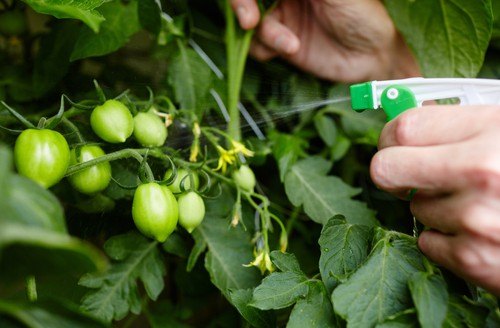
If your tomato plant is looking wilted and unhealthy, there are a few steps you can take to revive it. By following the right techniques and providing your plant with the necessary care, you can bring it back to life and enjoy a bountiful harvest.
1. Rehydration
One of the most common reasons for a dying tomato plant is dehydration. Tomatoes need consistent watering to thrive, and too much or too little can cause issues. If your plant is looking wilted, it’s likely in need of water.
To revive your tomato plant, start by watering it deeply at the base. Make sure the water is reaching the roots and not just the surface of the soil. Then, monitor the soil moisture levels closely and adjust your watering schedule as needed. A good rule of thumb is to water your tomato plant when the top inch of soil is dry.
2. Nutrient Boost
In addition to water, your tomato plant needs nutrients to grow and produce fruit. If your plant is struggling, it may be lacking in essential nutrients like nitrogen, phosphorus, and potassium.
To give your tomato plant a nutrient boost, consider adding compost or fertilizer to the soil. Compost is a great natural fertilizer that can provide your plant with a range of nutrients. Alternatively, you can use a liquid fertilizer or compost tea to give your plant a quick boost.
3. Disease and Pest Control
Disease and pests can also cause your tomato plant to die. If you notice any signs of disease or pest infestation, it’s important to take action quickly.
To prevent disease, make sure your tomato plant is getting enough sunlight and air circulation. You can also use a fungicide or other disease control product to treat any existing issues.
For pests, consider using natural pest control methods like companion planting or introducing beneficial insects like ladybugs. You can also use organic pest control products to keep pests at bay without harming your plant or the environment.
By following these steps, you can revive your dying tomato plant and enjoy a healthy, productive harvest. Remember to monitor your plant closely and adjust your care as needed to keep it thriving.
Choosing the Right Variety

When it comes to reviving a dying tomato plant, choosing the right variety can make all the difference. There are hundreds of tomato varieties available, each with its own unique characteristics. In this section, we’ll discuss the different types of tomato plants and the best varieties for reviving a dying plant.
Determinate vs Indeterminate
The first thing to consider when choosing a tomato variety is whether it’s determinate or indeterminate. Determinate tomatoes are bushy plants that grow to a certain height, set fruit, and then stop growing. Indeterminate tomatoes, on the other hand, continue to grow and produce fruit throughout the season.
If you’re looking to revive a dying tomato plant, an indeterminate variety may be your best bet. These plants are more resilient and can bounce back from stress or disease. Some popular indeterminate varieties include Beefsteak, Roma, and Cherry tomatoes.
Disease-Resistant Varieties
Another important factor to consider when choosing a tomato variety is disease resistance. Some tomato plants are more susceptible to diseases like blight, wilt, and mosaic virus. Choosing a disease-resistant variety can help prevent these issues and keep your plant healthy.
Some popular disease-resistant tomato varieties include:
- Celebrity
- Mountain Magic
- Defiant
- Iron Lady
When choosing a tomato variety, it’s important to read the seed packet or plant label carefully. Look for information about disease resistance, growth habits, and ideal growing conditions. By choosing the right variety, you can give your dying tomato plant the best chance of recovery.
Additional Tips for Success
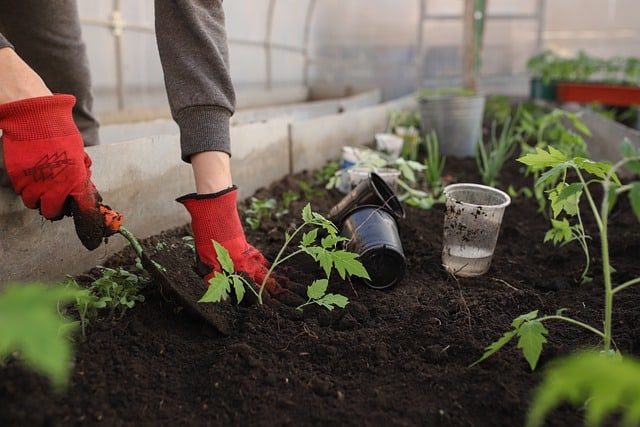
If you want to have a successful tomato crop, there are a few additional tips to keep in mind. These tips can help you revive a dying tomato plant and keep your plants healthy throughout the growing season.
1. Crop Rotation
Crop rotation is a technique used to prevent the buildup of soil-borne diseases and pests. By rotating your crops, you can help prevent the spread of diseases and pests that can harm your tomato plants.
It is recommended to rotate tomato plants with crops that are not in the same family, such as beans or lettuce. This will help prevent the buildup of soil-borne diseases and pests that can harm your tomato plants.
2. Composting
Composting is a great way to add organic materials to your soil. By adding compost to your garden, you can help improve soil structure, increase water retention, and provide nutrients for your plants.
To create a compost pile, you can use a variety of organic materials, such as shredded leaves, grass clippings, and vegetable scraps. Once your compost pile has broken down, you can add it to your garden to help improve soil health.
3. Mulching
Mulching is another great way to improve soil health and prevent soil-borne diseases and pests. By using organic materials, such as straw or shredded leaves, you can help improve soil structure, increase water retention, and prevent soil-borne diseases and pests.
Mulching also helps to regulate soil temperature, which can help your tomato plants grow and produce fruit.
Conclusion
It is also important to monitor the plant for signs of disease or pests. If left untreated, these issues can quickly spread and cause irreparable damage to the plant. Gardeners should regularly inspect their tomato plants for any signs of yellowing leaves, wilting, or discoloration.
If the plant is severely damaged or diseased, it may be necessary to transplant it to a new location. This can help to provide the plant with a fresh start and improve its chances of producing a healthy harvest.
Frequently Asked Questions
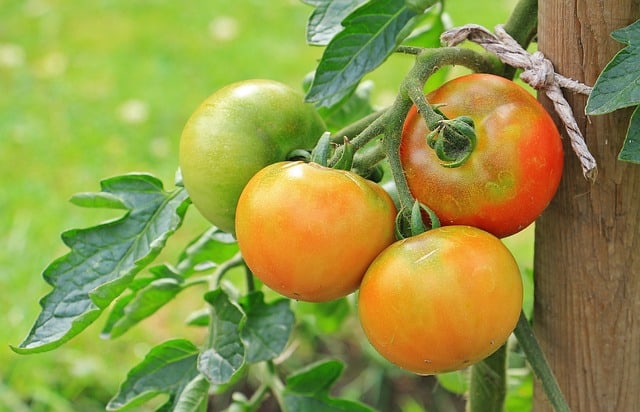
Can tomato plants recover from wilting?
Yes, tomato plants can recover from wilting if the cause is identified and addressed promptly. Wilting can be caused by several factors, including overwatering, underwatering, disease, pests, or extreme temperatures.
If the plant is not too far gone, it may recover by watering it correctly, removing diseased or damaged leaves, and providing adequate nutrients.
Why are my tomato plants dying from the bottom up?
Tomato plants can die from the bottom up due to a fungal disease called Fusarium wilt. This disease affects the roots and stems of the plant, causing it to wilt and die gradually.
It is caused by soil-borne fungi, and once it infects a plant, it is difficult to eradicate. The best way to prevent Fusarium wilt is to plant resistant varieties, rotate crops, and avoid overwatering.
What can I do to revive a tomato plant before fruit ripens?
If a tomato plant is dying before the fruit ripens, it is important to identify the cause and take corrective measures. Some common causes of plant decline include overwatering, underwatering, nutrient deficiency, pests, and disease.
To revive a dying plant, it is important to water it correctly, provide adequate nutrients, remove diseased or damaged leaves, and treat pests and disease promptly.
How can I revive a tomato plant after frost damage?
Tomato plants are susceptible to frost damage, which can cause the leaves to wilt and turn black. If the plant is not too far gone, it may recover by trimming off the damaged leaves and providing adequate water and nutrients.
It is also important to cover the plant with a frost blanket or cloth during cold weather to prevent further damage.
What causes a tomato plant to die from the top down?
A tomato plant can die from the top down due to a fungal disease called Verticillium wilt. This disease affects the leaves and stems of the plant, causing them to wilt and die gradually.
It is caused by soil-borne fungi, and once it infects a plant, it is difficult to eradicate. The best way to prevent Verticillium wilt is to plant resistant varieties, rotate crops, and avoid overwatering.
Is it possible to save a dead tomato plant?
If a tomato plant is completely dead, it is unlikely that it can be revived. However, if there is still some green foliage left on the plant, it may be possible to revive it by providing adequate water and nutrients and removing any diseased or damaged leaves.
It is important to act quickly to prevent further damage and increase the chances of revival.

Hey, I’m Lisa and I’ve been an avid gardener for over 30 years. I love writing, talking and living in the garden! Feel free to connect with me on my socials below

